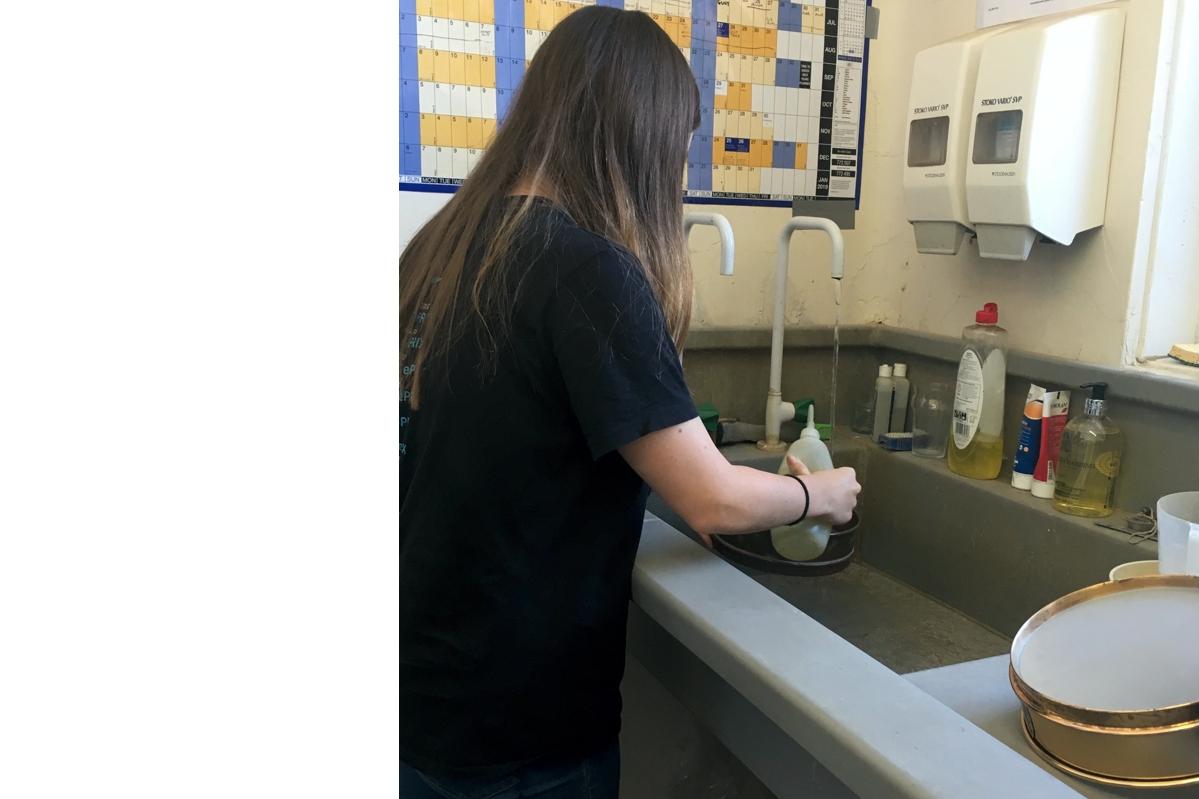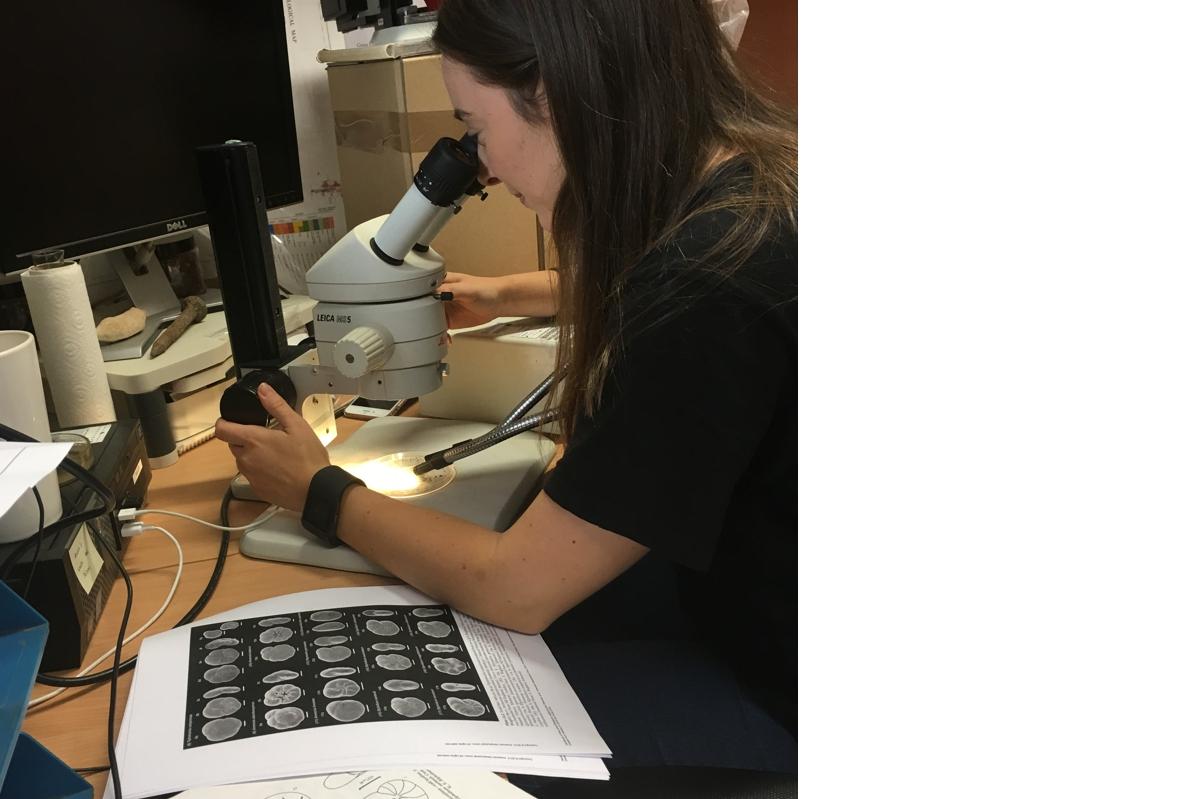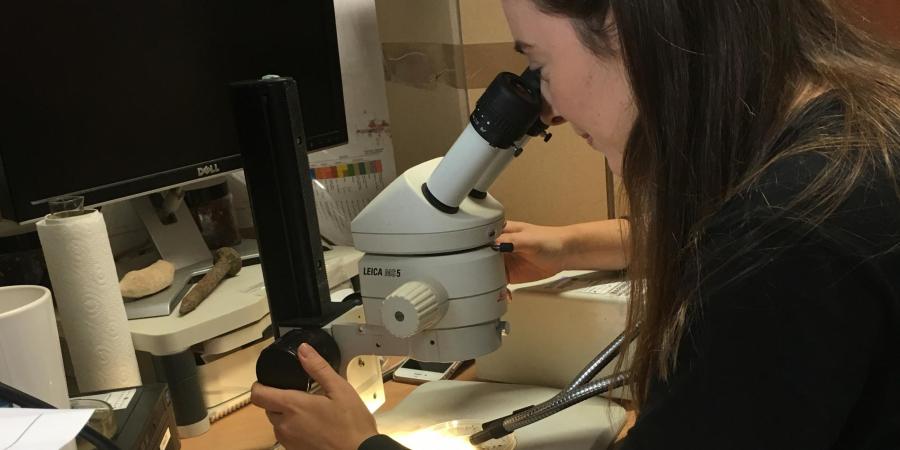Hello, my name is Hayley and I am a recent BSc Geography graduate from Royal Holloway University of London and will be completing the Quaternary Science MSc in the upcoming academic year. This summer I was given the opportunity to participate in some work experience with the Geoarchaeology and Environmental team at Wessex Archaeology’s Salisbury office. Coming from a non-archaeological background, I was very intrigued in learning about and advancing my current knowledge of various proxy techniques used to understand and reconstruct local environments. My initial interest in archaeology sparked from my work in the Armenian Southern Caucasus region, which involved the study of tephra (volcanic ash) from early Levallois archaeological sites to help build and interpret a high-resolution chronology of early human occupation out of Africa.
I was very excited in starting my work experience at Wessex knowing that I will be analysing a core from the North Sea for foraminifera potential. Fossil foraminifera assemblages are useful for biostratigraphy and understanding the rate of which past landscapes such as the Doggerland land mass flooded following ice sheet collapse after the last glacial period around 10,000 years ago. Reconstructing such regions are significant from an archaeological perspective, particularly given that the area was probably one of the last remaining land bridges connecting Great Britain to continental Europe.
On the morning of my arrival we took four sediment subsamples from the North Sea site core. The samples were then soaked in sodium carbonate (which was purchased in the form of Soda Crystals after a quick trip to Tesco) to break up the material ready for sieving. During the afternoon I collated information on the most common foraminifera found around Britain to be used in the later identification stage.


After being left to soak overnight, each sample was wet sieved through three separate mesh sizes (>250μm, 125−250μm, 63−125μm) to retain finer sediments and forams. I then begun using the microscope to identify potential foraminifera. Difficulties quickly arose however due to the microfossils floating upright in the water, making identification difficult. We decided to dry the samples to make distinguishing the different foraminifera easier. I quickly realised that identifying the different forams was going to take some time due to many species and sub-species looking morphologically identical, however I was able to successfully identify some foraminifera from each sample.
I have thoroughly enjoyed my time at Wessex as it has allowed me to understand more about the commercial side of archaeology and has given me an idea into the type of career I would like to pursue in the future. I am incredibly excited to apply what I have learnt during my time at Wessex to my studies this year. In particular, my time spent at Wessex has been incredibly beneficial for my dissertation which I hope will have a large focus on archaeological techniques. I am very thankful to the Geoarchaeology and Environmental Archaeology team, in particular Claire Mellett, for giving me the opportunity to experience first-hand some of the work completed here at Wessex Archaeology.
By Hayley Hawkins
